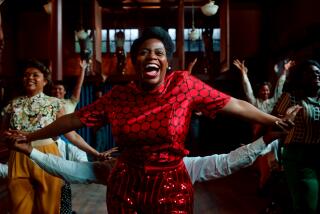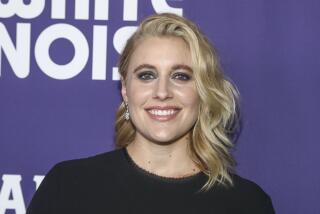Why it’s a perfect time for Greta Gerwig’s version of ‘Little Women’
- Share via
Screenwriter Robin Swicord remembers the questions: Why make another movie out of “Little Women”? It’s been done before, right? And quite well. What could another version possibly have to offer?
Swicord heard those queries in 1994 while promoting the last film adaptation of Louisa May Alcott’s classic novel about the smart, strong and independent-minded March sisters. And she’s hearing echoes of those same complaints-framed-as-questions today as a producer on Greta Gerwig’s recently announced new version of “Little Women.”
And, yes, she finds the logic behind the questioning rather … interesting.
“I remember right after our ‘Little Women’ came out, there was another movie about King Arthur [1995’s ‘First Knight’], and yet I don’t remember hearing anyone wondering why we needed another film about the Knights of the Round Table,” Swicord says. “It did feel kind of funny that it was just ‘Little Women’ that fielded those sorts of questions.”
A quarter century will have passed between the 1994 “Little Women,” a critical and commercial hit beautifully brought to life by Australian director Gillian Armstrong, and the version that Gerwig will begin filming in Boston with Saoirse Ronan, Meryl Streep, Emma Stone and Timothée Chalamet this October.
During the intervening years, there have been three “Spider Man” franchise reboots, a dozen Madea movies, 13 “X-Men” entries and a constant cultural churning of Batmen and Supermen and 007s.
But the first movie version of “Little Women” in a generation? That’s where some people — judging from the comments on websites that reported the news of Gerwig’s adaptation — want to draw the line?
To those objectors, it’s worth pointing out that the themes and characters of “Little Women” are so sturdy and timeless that not even William Shatner’s wild stab at a German accent by way of “Hogan’s Heroes” — he played Professor Bhaer, Jo’s love interest and a problematic figure among many “Little Women” devotees, in a 1978 miniseries adaptation — can derail its impact.
Swicord says she gets the grumbling and, in a way, she’s flattered by people saying that no one could improve on the “Little Women” movie she wrote, the movie that sported a superbly cast ensemble featuring Winona Ryder, Claire Danes, Trini Alvarado, Kirsten Dunst and Samantha Mathis as the March sisters (Dunst and Mathis played Amy at different ages); Christian Bale as the crush-worthy boy next door, Laurie; and Susan Sarandon as the strong, understanding mother, Marmee.
When Swicord and Amy Pascal and Denise Di Novi began thinking about making another version of “Little Women” a few years ago, they had to clear that initial hurdle of finding an approach that would speak to a new set of moviegoers who might not know Alcott’s book.
They met with a number of people, including Sarah Polley, though Swicord says that, contrary to reports, Polley’s involvement never went beyond initial talks. Gerwig came in two years ago. She had pretty much finished writing “Lady Bird,” another movie about young women finding and asserting themselves (although Lady Bird’s relationship with her mother is a tad more complicated). Having graduated from Barnard College where she studied English and philosophy, Gerwig arrived full of ideas for a new version of “Little Women.”
“Greta has a wonderfully associative, well-furnished mind,” Swicord says. “Her take on the novel more than convinced us that we could bring something new to the screen.”
Gerwig’s version will focus more on the March sisters’ lives as young adults after Meg, Jo and Amy leave home. (Poor, sweet, doomed Beth is content to remain with Marmee.) Scenes from the girls’ childhood will be seen as well, with the story jumping back and forth in time, past memories illuminating themes of identity, the search for self-esteem and the deep, complex bonds among sisters. (Alcott wrote two sequels, “Little Men” and “Jo’s Boys,” but Gerwig’s movie will focus on the first book.)
“It’s really taking a look at what it is for a young woman to enter the adult world,” Swicord says. “It’s a clear-eyed approach to the challenges women face as they try to bravely move into new situations.”
Previous film versions of “Little Women” — George Cukor’s 1933 adaptation starring Katharine Hepburn; a 1949 Technicolor take directed by Mervyn LeRoy and starring, among others, a young Elizabeth Taylor; and the 1994 movie Swicord wrote — have followed a linear approach to Alcott’s novel to varying degrees of success.
The novel was originally published in two volumes. The first, arriving in 1868, followed the impoverished March women as they persevered through the father’s absence during the Civil War. Alcott delivered the second part in 1869. Titled “Good Wives” in some markets, it jumps ahead three years, looking at Meg’s marriage and motherhood; Jo’s move to New York, where she tries to establish herself as a writer; and Amy’s European tour with the family’s wealthy, widowed Aunt March.
Gerwig’s movie will focus primarily on this second section, Swicord says.
“I think at this point in her life Greta has a real feel for stories about women coming into their own,” she adds.
Swicord confirms the casting: Ronan will play the fiercely independent Jo; Stone will portray sensible eldest sister Meg; and Florence Pugh is cast as the confident youngest sister, Amy. Chalamet makes for a natural Laurie, the charming and rich neighbor who falls in love with the March family and ends up proposing to two of the sisters. And Streep will play the acerbic Aunt March.
Chalamet and Ronan are “Lady Bird” alums, leading one to wonder if perhaps Laurie Metcalf, who earned an Oscar nomination playing Lady Bird’s combative mother, might slide into the “Little Women” cast, taking the Marmee role. (“No comment,” Swicord says with a laugh.)
However the cast rounds out, it’s no small thing that families who weren’t around when Bill Clinton was president will be able to watch the March sisters’ story gracefully unfold in theaters. The BBC produced a faithful, sun-dappled miniseries adaptation of “Little Women” that aired on PBS television stations this year. It felt like a missed opportunity, careful to a fault and awkward in its attempts to offer a little modern insight into the story.
The 1994 film, on the other hand, could be seen as a corrective to earlier versions, focusing not on who the March sisters might marry, but rather what kind of women they might become. Both Swicord and Armstrong read “Little Women” numerous times in their young lives and delved into research about Alcott’s life and the ways her journey mirrored and departed from her fictional stand-in, Jo.
Alcott never married, saying she’d “rather be a free spinster and paddle my own canoe.” And she really didn’t want to marry off Jo, either, writing in her journal: “Girls write to ask who the little women marry, as if that was the only aim and end of a woman’s life. I won’t marry Jo to Laurie to please anyone.” Her decision to pair Jo with Professor Bhaer instead still divides fans.
“That book was a lifeline for me as a young reader because Jo March was the only writer I knew,” Swicord says. “Reading her story showed me that a small-town, tomboyish girl could leave home for the big city and become a writer and maintain her family ties. Alcott saw her ambition as admirable, showing how it didn’t cause the family to disintegrate.”
“That idea was one thing I wanted to convey in my adaptation,” Swicord adds. “Greta has another take, and 25 years from now another writer will come up with another fresh way into the book. That’s the beauty of ‘Little Women.’ It’s not going anywhere.”
Twitter: @glennwhipp
More to Read
Only good movies
Get the Indie Focus newsletter, Mark Olsen's weekly guide to the world of cinema.
You may occasionally receive promotional content from the Los Angeles Times.











